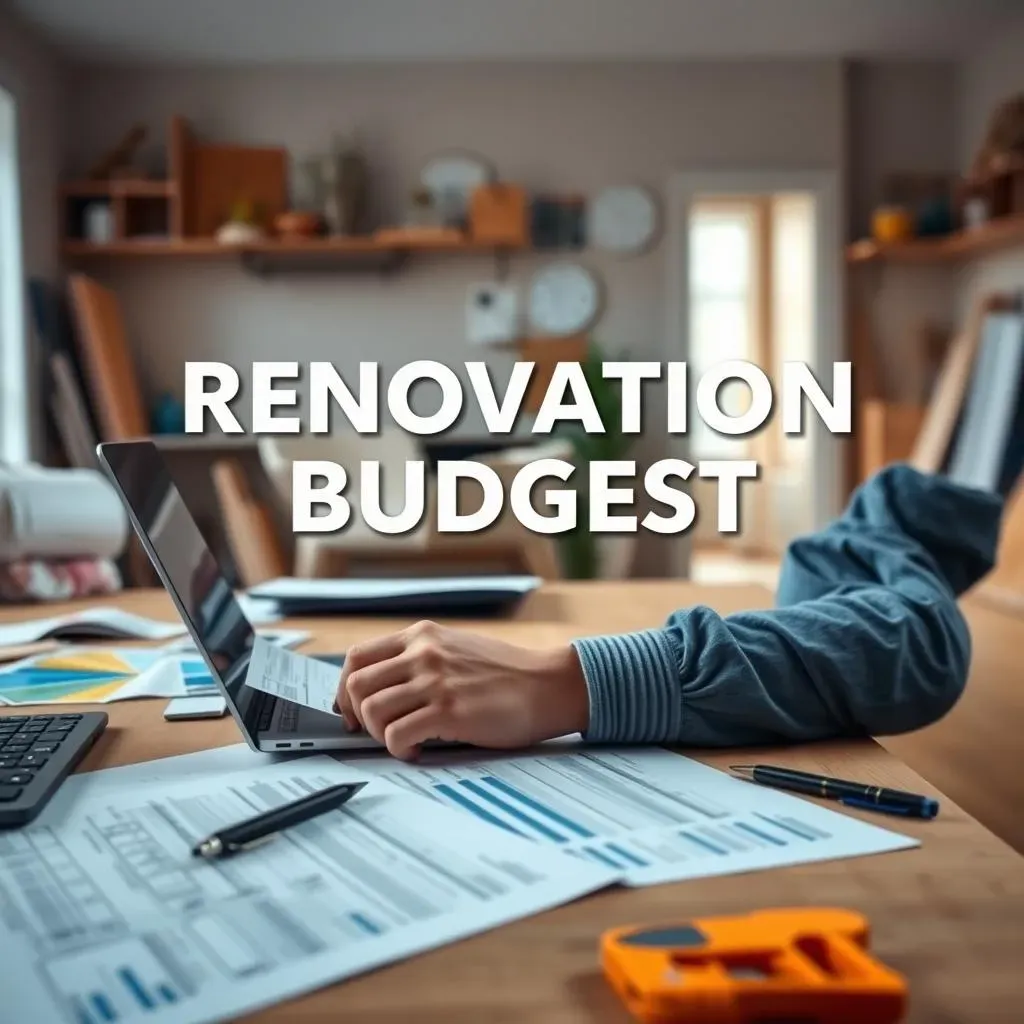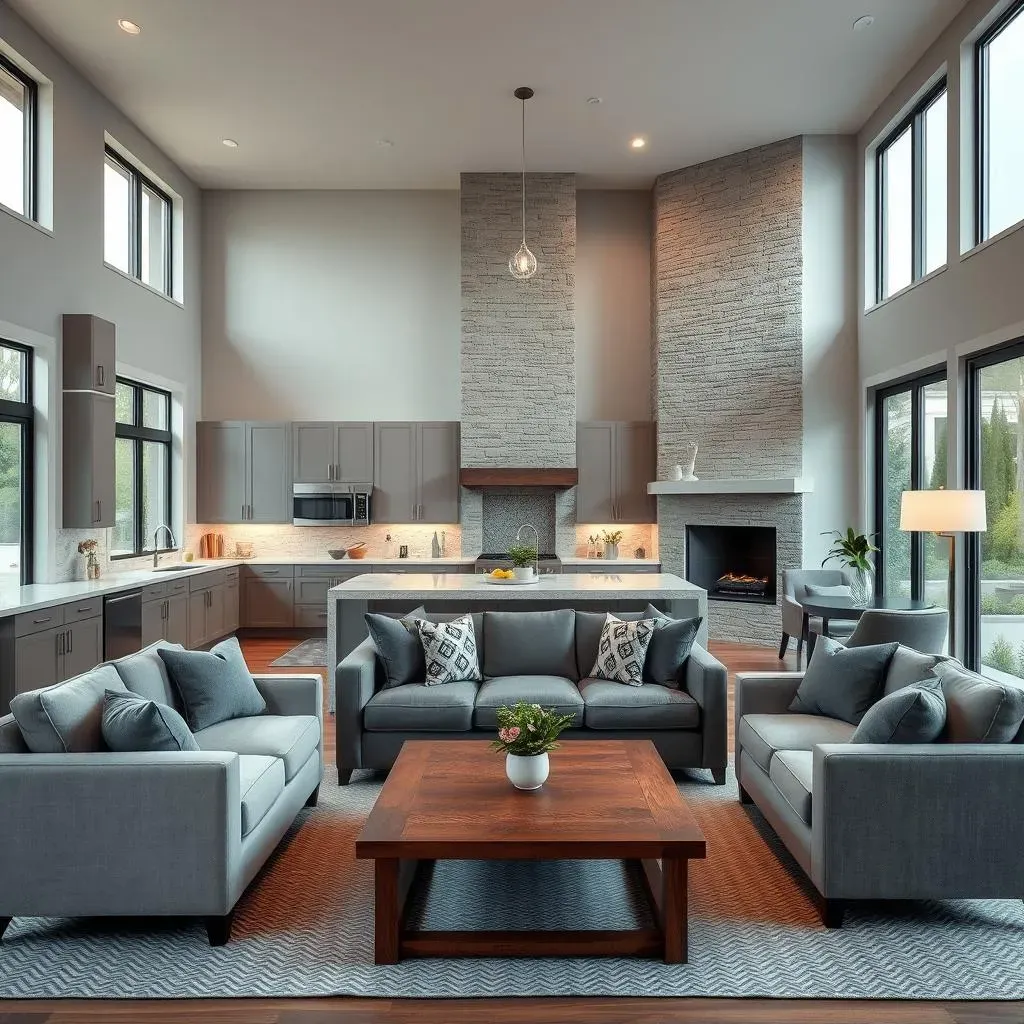Table of Contents
Thinking about sprucing up your place? You're not alone! But before you get carried away with paint swatches and dream kitchens, let's talk about a smart way to keep your renovation plans on track: the home improvement 30 rule. This isn't some complicated math equation, it's a simple guideline that can save you from overspending and potentially boost your home's value. We'll break down what the 30% rule actually means, why it's a good idea, and how to use it for your own project. We'll also look at budgeting tricks, cost-cutting strategies, and answer some common questions you might have. Consider this your roadmap to a successful and financially sound home renovation. Stick with us, and you'll be navigating your home improvement project like a pro. Let's get started!
Understanding the 30% Rule for Home Improvement
Understanding the 30% Rule for Home Improvement
What's the Big Deal with 30%?
Okay, so you've heard whispers of this "30% rule," and you're probably wondering what it is, right? Basically, it's a guideline that suggests you shouldn't spend more than 30% of your home's current market value on renovations. It’s like a financial safety net. Think of it as a way to keep your home improvement dreams from turning into budget nightmares. I know it sounds limiting, but it's there to protect you. It's like having a smart friend who's good with money giving you a little nudge before you go overboard.
Why 30%? Well, it’s a sweet spot. It’s enough to make significant improvements that add value to your home without putting you in a financial hole. It's also a good way to ensure you're not over-investing in your property for your neighborhood. You don't want to have the fanciest house on the block, especially if it means you won't see a return when you decide to sell. This rule isn't just about saving money now; it's about making smart choices for the long haul.
Why This Rule Matters
Let’s be real, renovations can be super tempting. You start with a small project, and next thing you know you’re tearing down walls and ordering custom cabinets. The 30% rule helps you avoid that "oops, I spent way too much" moment. It's a way to stay grounded. It's also about making sure the money you pour into your home actually pays off when it's time to sell. Over-improving can actually make it harder to find a buyer, or you might not get your money back. It's like putting a super expensive spoiler on a regular car; it might look cool, but it doesn't add to the value.
Beyond the financial aspect, this rule also pushes you to prioritize what's truly important. Do you *really* need that gold-plated faucet or is a functional and stylish one just as good? It encourages you to be strategic and focus on improvements that will make the biggest impact, not just the ones that are the most fun. It is about making smart choices and creating a home that's not only beautiful but also a solid investment. So, before you start swinging that hammer, take a moment to figure out your 30% – your wallet will thank you for it.
Benefit | Description |
|---|---|
Budget Control | Prevents overspending on renovations. |
Value Maximization | Helps ensure renovations add to home value. |
Strategic Spending | Encourages prioritizing essential improvements. |
Financial Safety | Avoids putting homeowners in a financial hole. |
How to Use the Home Improvement 30 Rule in Your Renovation
How to Use the Home Improvement 30 Rule in Your Renovation
Figuring Out Your 30% Limit
Alright, so you're on board with the 30% rule, great! But how do you actually put it into action? First things first, you need to know your home's current market value. This isn't what you *think* it's worth, or what you paid for it, but what it would realistically sell for right now. You can get a good estimate by checking recent sales of similar homes in your area, or even better, you could get a professional appraisal. Once you have that number, grab your calculator – it's time for some simple math. Just multiply your home's value by 0.30 (that’s 30%), and BAM! You've got your renovation budget limit. That's the magic number you need to keep in mind.
Now, don't just jump into tearing down walls yet. That 30% isn't a free-for-all pass, it's your total budget. That includes everything: materials, labor, permits, and even those unexpected "oh no!" moments. It's like a personal challenge to make the most of what you have. Think of it like planning a trip; you wouldn't just book the first flight and hotel you see, right? You'd research and compare prices, and that's what you need to do with your renovation budget too. It's about being smart and strategic from the get-go.
Planning Your Renovation Within the Limit
Okay, you've got your 30% limit, now what? This is where the real planning begins. It’s time to make a list of all the renovations you want to do. Be honest with yourself; don't just list your dream projects, think about what's realistic and what will add the most value. Divide your list into "must-haves" and "nice-to-haves". Focus on the "must-haves" first, since those are the essential upgrades that will have the biggest impact. For me, it was updating my kitchen, it was old and outdated, and that was a must-do. The fancy wine fridge, well... that was a nice-to-have that had to wait.
Once you have your list, start getting estimates. Don't just go with the first contractor you find; get quotes from a few different people, and make sure you're comparing apples to apples. Look at materials costs, too. There are often cheaper alternatives that can look just as good. Remember, this is about making smart choices to stay within your 30% limit. It's not about sacrificing quality, but rather about being creative and resourceful. Think of it like a puzzle; you're trying to fit all the pieces within your budget, making sure everything fits perfectly.
Step | Description |
|---|---|
1 | Determine your home's current market value. |
2 | Calculate 30% of that value (your budget limit). |
3 | Create a list of desired renovations. |
4 | Prioritize must-haves over nice-to-haves. |
5 | Get multiple estimates for materials and labor. |
Budgeting and CostCutting Tips for Your Home Improvement
Budgeting and CostCutting Tips for Your Home Improvement
Creating a Realistic Budget
Okay, so you've got your 30% limit, but how do you make a budget that actually works? It's not enough to just know the number, you need to plan where every dollar goes. First, take that list of "must-haves" and break each project down into smaller tasks. Then, research the cost of materials and labor for each task. Don't just guess; get online and see what things actually cost in your area. You might be surprised at how much prices can vary. I know I was when I saw how much paint can cost! Once you have a good idea of the costs, create a spreadsheet or use a budgeting app to track everything. This might sound like a lot of work, but it will save you from those nasty surprises later on.
Remember to include a buffer for unexpected expenses. Things will always come up. Maybe you'll find some hidden damage behind a wall, or maybe you'll suddenly decide you need a different type of tile. It's a good idea to add an extra 10-15% to your total budget for those surprises. It's better to have it and not need it than to be stuck halfway through a project with no money left. I had a leaky pipe that I didn't know about, and that extra buffer saved me. So, be realistic, be detailed, and don't forget that little cushion. It's like having an umbrella in case it rains; you might not need it, but you'll be glad you have it.
Smart Ways to Save Money
Alright, so budgeting is important, but what about actually saving some cash? There are plenty of ways to cut costs without sacrificing quality. One of the biggest ways is to do some of the work yourself, if you're up for it. There are tons of tutorials online for things like painting, installing flooring, or even basic plumbing. I painted my whole living room myself, and it saved me a bundle. But, be honest about your skills! If you're not confident, it's better to hire a professional than to mess something up and have to pay even more later to fix it. Also, consider choosing cost-effective materials. There are often cheaper options that look just as good as the expensive ones. Don't be afraid to shop around and compare prices at different stores. It's like going grocery shopping; you wouldn't buy the first thing you see, you'd look for the best deals.
Another way to save money is to negotiate with contractors. Don't be afraid to ask for discounts or to get quotes from multiple people. You might be surprised at how much you can save just by asking. And, finally, keep track of your expenses. Use that spreadsheet or app you created, and update it regularly. This will help you see where your money is going and make adjustments if needed. It's like tracking your steps with a fitness tracker; you can see how far you've come and how much farther you need to go. These little things can add up, and you'll be surprised at how much you can save in the long run.
Cost-Cutting Strategy | Description |
|---|---|
DIY Projects | Handle tasks like painting or simple installations yourself. |
Cost-Effective Materials | Choose budget-friendly options that still look great. |
Negotiate with Contractors | Don't hesitate to ask for discounts or multiple quotes. |
Track Your Expenses | Monitor spending to stay within the budget. |
Prioritize Needs | Focus on essential upgrades that offer the most value. |
Home Improvement 30 Rule FAQs and Essential Advice
Home Improvement 30 Rule FAQs and Essential Advice
Is the 30% Rule a Hard and Fast Rule?
Okay, so you've got the gist of the 30% rule, but you're probably wondering if it's set in stone. The truth is, it's more of a guideline than a strict law. It's not like the police are going to show up if you go over budget, but it’s there to guide you. Your specific situation will play a big part. If you're in a super hot real estate market, you might be able to push that number a little higher, but if your neighborhood is more stable, sticking closer to the 30% is a safer bet. The type of renovation you're doing also matters. If you're just doing some cosmetic upgrades, you might not need the full 30%, but if you're tackling a major kitchen or bathroom remodel, that 30% might be exactly what you need. Think of the 30% rule as a starting point, not the final word, and adjust it based on your personal circumstances and goals.
What if you're planning to sell soon? Then, the 30% rule becomes even more crucial. You want to make sure that the money you invest in renovations will actually increase your home's value and make it more appealing to potential buyers. Focus on updates that are popular with buyers in your area. For me, it was updating my old, outdated bathroom. If you're planning to stay in your home for a long time, you have more flexibility. You can prioritize renovations that make you happy, even if they don’t add much to the resale value, but the 30% rule can still help you avoid overspending and stay on track. Remember, this is about making informed decisions that align with your goals, not just following a rule blindly. It's like having a recipe, you can adjust the ingredients to your taste but still end up with a great meal.
What Renovations Add the Most Value?
So, if you're going to spend money on renovations, you want to make sure it's going to be worth it, right? Some updates just add more value than others. Generally, kitchen and bathroom remodels are the big winners. These are the areas that potential buyers focus on the most, and outdated kitchens and bathrooms can really turn people off. I know when I was looking for a house, those were the first places I checked. But, it's not just about the space, it's about making smart upgrades. Things like energy-efficient appliances, updated lighting, and new countertops are all good choices. It's about making the space look modern and functional.
But don’t forget about the outside of your house. Curb appeal is a big deal, so a fresh coat of paint, some new landscaping, or a new front door can make a big difference. These are often cheaper and easier to do than major interior renovations, but they can have a huge impact on how people perceive your home. It’s like when you meet someone for the first time, first impressions matter. Also, think about the overall flow and functionality of your home. Are there any awkward layouts that could be improved? Sometimes, even small changes can make a big difference. I changed the layout of my living room and it felt like a new house. It’s about creating a space that's not only beautiful but also practical and appealing to a wide range of people.
Renovation Type | Value Added |
|---|---|
Kitchen Remodel | High value, especially with modern upgrades. |
Bathroom Remodel | High value, focus on functionality and style. |
Curb Appeal Updates | Good value, improves first impressions. |
Energy-Efficient Upgrades | Increasingly valuable for buyers. |
Layout Improvements | Can greatly enhance functionality. |
Wrapping Up Your Home Improvement Journey
So, there you have it – the home improvement 30 rule, demystified. It's not a magic bullet, but it's a powerful tool to help you make smart decisions about your renovation. Remember, it's about finding a balance between your dreams and your bank account. By understanding the rule, planning a solid budget, and keeping an eye on expenses, you'll not only avoid overspending but also create a space you truly love. Home improvement should be exciting, not stressful. Use this information to guide you, and you'll be well on your way to a successful and satisfying project. Now, go forth and renovate!